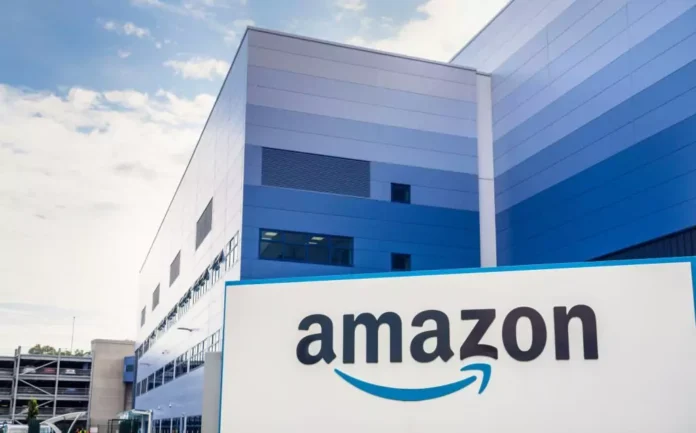Introduction
Amazon is one of the largest e-commerce companies in the world, and its delivery services are a crucial part of its success. With millions of packages being delivered every day, it’s important to understand how Amazon drivers know where to go and how they navigate through traffic to make their deliveries. In this article, we’ll explore the role of technology in Amazon’s delivery services, the tools and strategies used by drivers, and the importance of customer feedback in improving delivery efficiency.

The Role of Technology in Amazon Delivery
Amazon’s delivery services rely heavily on technology to improve efficiency and accuracy. From the moment an order is placed, technology is used to track the package, assign it to a driver, and provide real-time updates to customers. Amazon uses a variety of tools and systems, including GPS navigation, mapping software, and delivery algorithms, to ensure that packages are delivered on time and to the correct location.
The use of technology has greatly improved delivery efficiency for Amazon. With real-time tracking and updates, customers can see exactly where their package is and when it will arrive. This has led to increased customer satisfaction and loyalty, as well as improved delivery times and reduced costs for Amazon.
GPS Navigation and Mapping Tools Used by Amazon Drivers
Amazon drivers use GPS navigation and mapping tools to find the most efficient route to their delivery destinations. These tools provide real-time traffic updates, alternative routes, and turn-by-turn directions to help drivers navigate through busy streets and avoid traffic congestion. This not only saves time but also reduces fuel costs and wear and tear on vehicles.
The use of GPS navigation and mapping tools has become essential for Amazon drivers, especially in urban areas where traffic can be unpredictable. By using these tools, drivers can optimize their routes and make more deliveries in less time, which ultimately benefits both Amazon and its customers.
How Amazon Drivers Receive Delivery Instructions
Amazon drivers receive delivery instructions through a mobile app that provides detailed information about each package, including the delivery address, delivery window, and any special instructions or requests from the customer. The app also provides real-time updates on traffic and weather conditions, which can affect delivery times.
Clear and concise delivery instructions are essential for successful deliveries. Amazon drivers rely on accurate and up-to-date information to ensure that packages are delivered to the correct location and on time. Any errors or discrepancies in the delivery instructions can lead to delays, missed deliveries, and unhappy customers.
The Importance of Real-Time Traffic Updates for Amazon Drivers
Real-time traffic updates are crucial for Amazon drivers, especially in urban areas where traffic can be unpredictable. By receiving real-time updates on traffic conditions, drivers can adjust their routes and avoid congested areas, which saves time and reduces the risk of accidents or delays.
Avoiding traffic is not only important for delivery efficiency but also for driver safety. With real-time traffic updates, drivers can make informed decisions about their routes and avoid potentially dangerous situations on the road.
How Amazon Drivers Handle Delivery Challenges
Amazon drivers face a variety of challenges on a daily basis, including traffic congestion, difficult delivery locations, and inclement weather. To overcome these challenges, drivers use a variety of strategies, such as using alternative routes, communicating with customers, and using specialized equipment to access difficult delivery locations.
Communication is key when it comes to overcoming delivery challenges. Amazon drivers are trained to communicate effectively with customers and to provide updates on any delays or issues that may arise during the delivery process. By keeping customers informed, drivers can help to reduce frustration and ensure that packages are delivered successfully.
The Role of Customer Feedback in Amazon Delivery Services
Customer feedback is an important part of Amazon’s delivery services. By collecting feedback from customers, Amazon can identify areas for improvement and make changes to its delivery processes to improve efficiency and customer satisfaction.
Customer feedback is used to identify issues such as missed deliveries, damaged packages, and delivery delays. Amazon uses this feedback to make changes to its delivery processes, such as improving packaging materials, providing additional training for drivers, and optimizing delivery routes.
Amazon’s Delivery Algorithm and Routing System
Amazon’s delivery algorithm and routing system are designed to optimize delivery efficiency and reduce costs. The algorithm takes into account factors such as package size, delivery location, and traffic conditions to determine the most efficient route for each driver.
The routing system is constantly updated in real-time to account for changes in traffic conditions and delivery volumes. This ensures that drivers are always taking the most efficient route and making the most deliveries in the shortest amount of time.
The Future of Amazon Delivery Services
The future of Amazon’s delivery services is likely to involve even more advanced technology, such as drones and autonomous vehicles. These technologies have the potential to further improve delivery efficiency and reduce costs, while also reducing the environmental impact of delivery vehicles.
As technology continues to evolve, it’s important for Amazon to adapt to changing customer needs and preferences. This may involve changes to delivery processes, such as offering more flexible delivery options or expanding the use of alternative delivery methods.
Conclusion: The Efficiency of Amazon’s Delivery System
In conclusion, Amazon’s delivery system is a highly efficient and complex operation that relies heavily on technology and customer feedback. By using GPS navigation, mapping tools, and real-time traffic updates, Amazon drivers are able to make more deliveries in less time, which benefits both Amazon and its customers.
The use of advanced algorithms and routing systems further improves delivery efficiency and reduces costs, while customer feedback helps to identify areas for improvement and ensure that customers are satisfied with their delivery experience.
As technology continues to evolve, it’s likely that Amazon’s delivery services will continue to improve and become even more efficient. By adapting to changing customer needs and preferences, Amazon can continue to provide high-quality delivery services that meet the needs of its customers.



